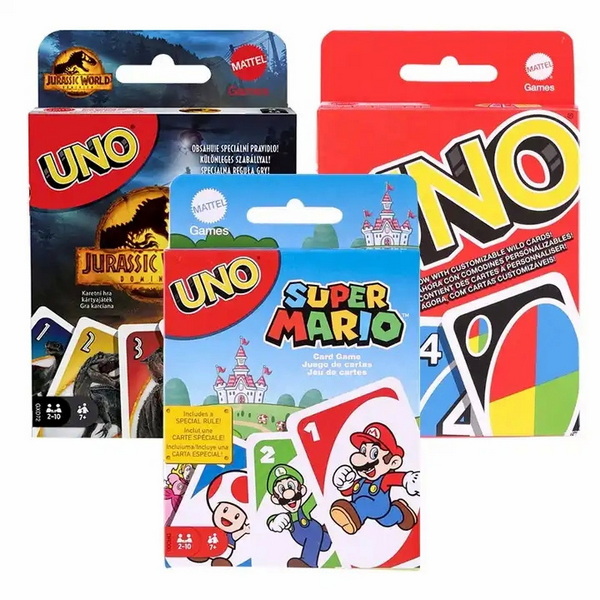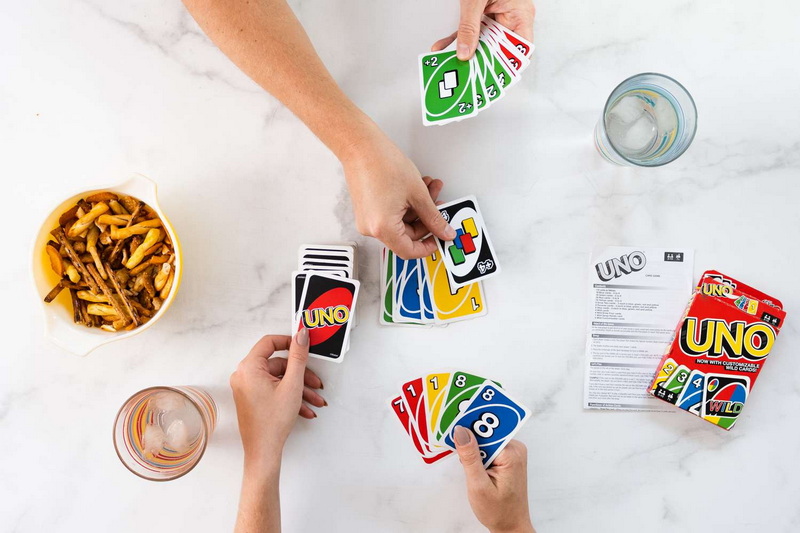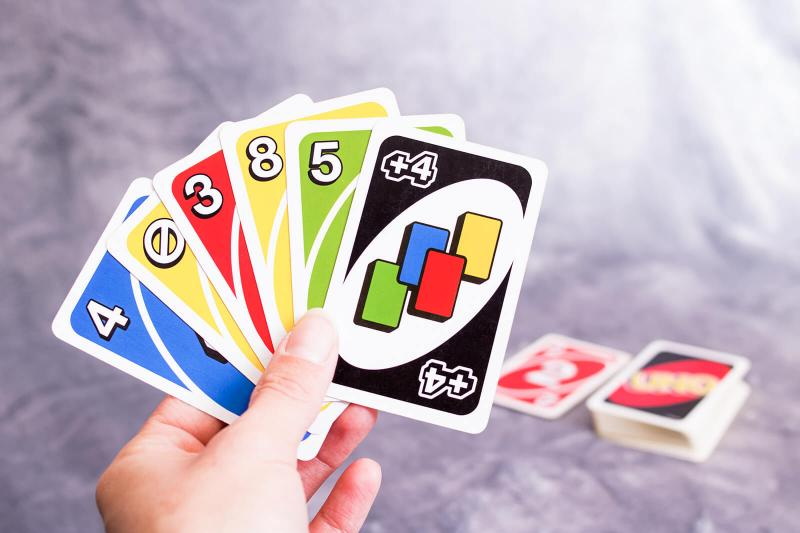Content Menu
● Introduction
● Market landscape
● Profiling leading manufacturers and capabilities
>> OEM and ODM expertise:
>> Packaging and accessories:
>> Compliance and safety:
● Profiles of notable categories and capabilities
● Sourcing considerations for Uno cards
● Case studies and practical insights
● Product range and related offerings
● Quality and sustainability considerations
● Logistics and export readiness
● Display-ready strategies
● Choosing a partner: a practical checklist
● Conclusion
● FAQ
>> 1) What factors should I consider when evaluating Uno card manufacturers in Japan?
>> 2) Do Japanese manufacturers support private-label Uno card projects?
>> 3) What kind of packaging services accompany Uno card production in Japan?
>> 4) How important are sustainability practices for Uno card manufacturers in Japan?
>> 5) What is a typical lead time for custom Uno card decks from Japanese manufacturers?
● Citations
Introduction
Japan's playing-card and hobby-goods ecosystem blends traditional craftsmanship with modern customization capabilities. For international brands, retailers, and manufacturers seeking OEM services for Uno Cards Manufacturers and Suppliers, the Japanese market offers strong quality standards, reliable logistics, and a network of specialists in packaging, accessories, and promotional materials. This article examines the landscape of Uno Cards manufacturers in Japan, highlights key players, discusses OEM/ODM capabilities, and provides practical guidance for choosing a partner. It also integrates insights on retail packaging, card quality control, and value-added services that elevate a supplier's offering.

Market landscape
Japan's card game sector combines traditional playing cards, collectible card games, and mass-market Uno-style decks adapted for local and export markets. The demand for durable stock, vibrant color reproduction, and precise color matching aligns with quality expectations across consumer electronics, toys, and publishing. Manufacturers commonly offer end-to-end solutions, including design adaptations, packaging art, barcode-ready labeling, and compliance with international toy and game safety standards. Uno Cards Manufacturers and Suppliers in Japan often position themselves as one-stop shops for brands seeking reliable printing, finishing, and packaging services, from concept through distribution. This ecosystem supports both small-volume pilot runs and larger-scale production, with scalable lead times and robust quality assurance processes. These capabilities are increasingly complemented by digital tooling, such as design proofs, color-management systems, and online QA portals, enabling closer collaboration with global brands. In many cases, suppliers in Japan emphasize traceability, environmental stewardship, and social responsibility as part of their value proposition, resonating with international buyers who prioritize sustainability alongside performance. The market remains competitive, with a mix of legacy workshops that preserve artisanal techniques and modern facilities that leverage high-speed presses and automated finishing lines. This combination ensures that Uno Cards Manufacturers and Suppliers in Japan can deliver both unique regional editions and standardized global decks, aligned with diverse regulatory regimes and consumer preferences.
Profiling leading manufacturers and capabilities
OEM and ODM expertise:
Many Japanese suppliers provide comprehensive OEM/ODM services, enabling brands to customize card art, back designs, rule variations, and packaging formats while maintaining strict quality control. Expect capabilities such as prepress mockups, color proofs, and inline inspection during print runs. In addition, some manufacturers offer modular production lines, allowing rapid switching between deck formats, finish options, and packaging configurations without compromising throughput. This agility is valuable for limited-edition collaborations, seasonal releases, and regional adaptations. A partner who can translate brand guidelines into print-ready art and then validate with on-press checks reduces iteration cycles and accelerates time-to-market.
Packaging and accessories:
Beyond cards, Japanese suppliers frequently offer header cards, boxes, instruction manuals, and promotional inserts, ensuring cohesive branding across retail packaging. Some providers also influence display stands, banners, and cue cards for point-of-sale. Integrated solutions—from card stock to outer carton design—help brands maintain consistent aesthetics across channels.
Compliance and safety:
Reputable manufacturers emphasize conformity with international safety standards for toys and games, including material composition, surface coatings, and child-safety requirements, helping brands meet regulatory expectations in multiple markets. A credible partner maintains up-to-date certifications and a transparent bill of materials, aiding customers in audits and market entry.
Profiles of notable categories and capabilities
- Card stock and finish options: Options typically include durable stock suitable for handling and shuffling, smooth matte finishes, gloss coatings, lamination, and edge reinforcement. Customization ensures compatibility with international printing standards and compatibility with various box sizes. Some manufacturers offer recycled or responsibly sourced materials, appealing to sustainability-focused brands.
- Custom art and branding: Design services range from translating brand guidelines into card-face art to creating unique back patterns and rule variants, all aligned with target markets. Artists or in-house design teams collaborate to ensure print fidelity, color accuracy, and consistent ink coverage across runs.
- Packaging design: Header cards, tuck boxes, and display-ready packaging are commonly offered, with foil stamping, embossing, or spot UV finishes available to differentiate the product on shelves. Some partners provide dielines and 3D mockups to visualize shelf impact before production begins.
Sourcing considerations for Uno cards
- Minimum order quantities: OEM partners usually publish MOQs suitable for brands testing new markets or launching limited editions. Understanding MOQs helps optimize cash flow and inventory management.
- Lead times and scalability: Turnaround times vary with print complexity, finishing, and packaging options. Partnering with a Japanese supplier that maintains strong supply chains reduces risks of delays, while tiered pricing can reward larger runs.
- Quality assurance: Inline inspection, final random sampling, and certification documentation are essential components of a reliable supplier relationship. Request proof of QA processes, color management plans, and sample approvals early in the engagement.

Case studies and practical insights
- Limited-edition collaborations: Some Uno variants in Japan leverage local artists or collaborations to generate buzz, illustrating the value of co-creation with retailers or brand partners. These programs require careful licensing and design approval workflows, with clear ownership of artwork and royalty arrangements.
- Retail display optimization: Collaborations with display manufacturers can yield customized in-store stands and shelf-ready packaging that improve visibility and unit sales, aligning with both brand aesthetics and functional requirements. Data-driven shelf studies and A/B testing can quantify impact and inform iterative design improvements.
Product range and related offerings
- Card decks: Standard Uno-style decks with customizable face/back art, numbers, and symbols. Special rule variants can be integrated into deck design as promotional or regional editions.
- Packaging and labeling: Shrink wrap, inner trays, foil-stamped tuck boxes, and instructional sheets are common add-ons, designed for retail efficiency and brand coherence.
- Promotional inserts: QR codes linking to digital content, loyalty programs, or setup videos can be included for enhanced consumer experience. Integrations with online manuals or mobile apps can be considered for advanced user engagement.
- Related products: Retail packaging components such as display headers, stickers, and labels complement card sets and enable cohesive brand presentation. Some manufacturers offer end-to-end promotional package design, including co-branded marketing materials.
Quality and sustainability considerations
- Material sourcing: Reputable manufacturers prioritize responsibly sourced paper stock and inks, with attention to recyclability and minimal environmental impact in line with global consumer expectations. Some suppliers offer FSC-certified materials and soy-based or vegetable-based inks.
- Waste reduction: Efficient press planning, waste-reducing cutting techniques, and recyclable packaging contribute to a sustainable production profile and lower lifecycle costs. Continuous improvement programs, such as lean manufacturing and waste-stream analysis, help maintain competitive cost structures.
Logistics and export readiness
- Cross-border capabilities: Japanese Uno cards suppliers often have established logistics networks for exporting to Asia-Pacific, North America, and Europe, aligning with brands' distribution strategies. Clear documentation, packaging specs, and compliance attestations facilitate smooth customs clearance.
- Private-label and white-label options: For brands seeking speed-to-market, private-label arrangements allow rapid onboarding of new products under existing packaging frameworks. Some partners offer standardized branding kits to accelerate customization while ensuring quality control.
Display-ready strategies
- In-store impact: Coordinating with packaging designers and retailers to optimize shelf presence, using bold color, legible typography, and consistent brand cues across card and packaging artwork, enhances consumer recognition.
- Digital integration: Augmented reality (AR) or QR-linked content can augment gameplay experiences and provide marketers with engagement analytics. While not universal, select suppliers offer digital integration services or partnerships.
Choosing a partner: a practical checklist
- Define scope: Clarify whether the need is OEM for card art, packaging, or full-spectrum production, including display materials and labels.
- Request samples: Evaluate card stock, finishes, and print fidelity through physical prototypes or digital proofs.
- Review QA protocols: Seek detailed QA plans, tolerances, and failure rates to ensure consistency across runs.
- Confirm lead times and MOQs: Align production scheduling with market launches and inventory planning.
- Assess licensing and compliance: For branded editions or collaborations, ensure clear licensing agreements and safety certifications.
Conclusion
The Uno cards manufacturing ecosystem in Japan integrates high-quality production capabilities with robust packaging and display support. For brands seeking Uno Cards Manufacturers and Suppliers, partnering with a Japanese supplier can deliver consistent quality, streamlined logistics, and value-added services that strengthen market presence. By prioritizing clear scope definition, rigorous QA, and thoughtful packaging design, brands can realize successful, scalable product launches in Japan and beyond. A strategic approach—combining design fidelity, process transparency, and adaptive manufacturing—helps optimize costs, speed-to-market, and consumer satisfaction across global markets.

FAQ
1) What factors should I consider when evaluating Uno card manufacturers in Japan?
- Consider MOQs, lead times, print fidelity, packaging options, QA processes, and licensing requirements to ensure alignment with brand goals.
2) Do Japanese manufacturers support private-label Uno card projects?
- Yes, many suppliers offer private-label or white-label arrangements, enabling faster market entry with established production capabilities.
3) What kind of packaging services accompany Uno card production in Japan?
- Packaging services often include header cards, tuck boxes, display-ready packaging, labeling, and promotional inserts, all designed for retail efficiency.
4) How important are sustainability practices for Uno card manufacturers in Japan?
- Sustainability considerations such as responsibly sourced stock, recyclable materials, and waste-reducing processes are increasingly prioritized by suppliers and brands.
5) What is a typical lead time for custom Uno card decks from Japanese manufacturers?
- Lead times vary by complexity but generally depend on print run size, finishing, and packaging requirements; request a detailed schedule from the supplier.
Citations
[1](https://www.youtube.com/watch?v=Sxt7g4eU8hk)
[2](https://www.youtube.com/watch?v=d1NTNfSkIjw)
[3](https://www.leafkyoto.net/en/241004-kyoto-nintendo/)
[4](https://www.reddit.com/r/japanlife/comments/1j23mhk/card_game_printing_japan/)
[5](https://www.angelplayingcards.com/en/company/)
[6](http://blog.beforemario.com/2016/01/nintendo-playing-card-catalogue-from.html)
[7](https://museum.nintendo.com/en/index.html)
[8](https://cartamundi.com/en/production/)
[9](https://www.unomatic.com/company-profile/)
































